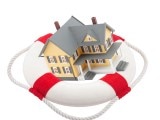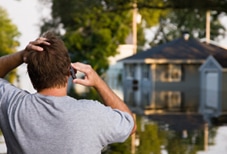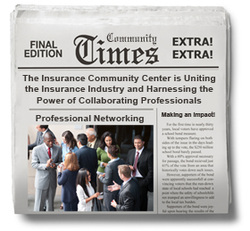|
Premiums are soaring due to climate risks, which helps to sideline buyers who may have intended to invest in property mitigation measures. That’s a loss for the entire housing market.
Rising home insurance premiums are making it increasingly difficult to achieve homeownership in America, experts said Thursday at an affordable housing symposium in Washington, D.C., hosted by the National Housing Conference. “Premiums are increasing faster than property values,” said Michael Butchko, vice president of business intelligence at Neighborworks America. He pointed to research from Policygenius(link is external), an online insurance marketplace, showing that home insurance premiums nationwide increased an average of 21% year over year in May—translating to an annual hike of $244. In some areas, premiums spiked 50%, according to Policygenius. These escalating insurance costs are forcing some would-be home buyers out of the market and some homeowners to sell. Major insurance providers are canceling policies and pulling out of areas of the country prone to natural disaster, further leaving homeowners in a bind. Some owners are “going naked,” paying off their mortgage early to avoid the homeowner’s insurance requirement by their lender. The rising cost of insurance is an affordable housing issue,” said Thom Amdur, senior vice president of policy and impact at investment firm Lincoln Avenue Communities, adding that frequent and intensifying climate events, surging construction costs, inflation, and declining competition in the insurance marketplace are putting upward pressure on premiums. The hikes aren’t just hurting homeowners but also developers, which could lead to fewer affordable housing projects, he said. Measuring Future Risk to PropertyTechnology and data can point to the areas at greatest risk of wildfires, hurricanes, wind damage, storm surge, earthquakes, flooding and snowstorms, said Peter Carroll, head of public policy at CoreLogic. Data models also can project 15 to 30 years out, using different climate change scenarios. “Technology can provide powerful measurements of possible underinsured losses for any property,” Carroll said. But, he cautioned, “risk profiles could shift in 15 or 30 years from now, and we could fundamentally see different risk profiles on properties. So, we can’t just look and price out properties based on the risks today. We need to look into the future so that we know where the puck is heading. People who think they don’t need insurance today may need it later on.” Starting next year, Lincoln Avenue Communities will cull data to build out a scorecard for each of its projects, factoring in climate and other risks. “Then we can design mitigation upfront to address any concerns,” Amdur said. He emphasized the importance of “de-risking” real estate portfolios and showing insurers the mitigation steps taken—which may help lower insurance premiums. Consumers also want data to gauge climate risks, with recent surveys indicating an increased concern among the public about how climate events impact housing. Still, that hasn’t changed where home buyers choose to live, said Nicole Bachaud, a senior economist at Zillow. Affordability challenges continue to drive buyers to high-risk areas, where home prices tend to be more moderate. But financial constraints may prevent buyers from retrofitting their property to mitigate climate risks. “Data transparency is huge and giving people access to this type of information to know the risks,” Bachaud said. “But we also need to follow up with what you can do. Consumers need to understand that this will continue to harm housing markets and affordability. We really need to have a mindset shift. That will be a game-changer to see more resilient housing choices in the future.” Preparing the Housing StockPanelists shared a range of ideas to solve the insurance conundrum, including mandatory flood insurance to shore up capital reserves and government backstops to increase the supply of insurance. They also spoke about greater funding and tax credits or other incentives to make communities more resilient to climate change. While their ideas varied, panelists agreed that strengthening the nation’s housing stock against climate events can help drive down insurance costs over the long-term. Stronger building codes are correlated with lower mortgage delinquencies following a disaster, CoreLogic data shows. “We need to start thinking about incentives or building codes that have a more adaptive response to climate risks so we have the right mitigation techniques in place,” Carroll said. “We need to consider the retrofits that can be made to ensure a home is more resilient to future events. We also need innovative financing that makes it easier and affordable for low- to moderate-income families to do resiliency retrofits to their homes.” Amdur said that doesn’t necessarily mean shying away from high-risk areas; preserving the housing stock is still important. “It’s not impossible to build resiliency into areas with higher risk,” he said. His company still takes on projects in coastal areas: “We just need to know the risks upfront and then build it in.” That could mean new design standards, such as removing mechanical systems from the ground floor, installing flood barriers and following updated landscaping guidelines to decrease wildfire risks. Bachaud said climate risk should be weighed more heavily in future developments. “We should be using climate as a lens of where we focus new communities,” she said. “Places that have less risk—climate havens—will become more popular as people are forced to flee places that have been damaged or where they can no longer afford to pay for the insurance on their homes. We need to be strategic in how we approach the future of housing supply and address ways to mitigate climate risks.”
0 Comments
Burn injuries in the United States lead to over 400,000 people needing care each year. Yet, with simple lifestyle changes and safety measures most home burns can be prevented. Below are a few tips to help you and your family avoid burn injuries.
Monitor the condition of electrical cords Electrical fires are a common cause of injuries resulting from burns. Be sure that the quality of your cords is being maintained and always throw away electrical cords that are damaged or broken. Make sure to check for damage frequently and never overload your outlets, power strips, or electrical circuits. For increased safety, experts advise installing safety caps on electrical cords and storing them out of reach. Use space heaters carefully Make sure to have enough fixed space around your heaters. When you leave the room or turn in for the night, always switch off heating devices. Experts recommend keeping all flammable materials, like curtains, blankets or towels at least three feet away from your heaters. Practice burn safety in your kitchen Burn accidents happen frequently in the kitchen. While cooking, never leave your food unattended and keep the stove area clear of all flammable materials. Make sure to keep your cooking area clean - grease and debris can quickly cause a fire emergency. Never use an oven to heat your home and always turn off cooking appliances when you are finished using them. Check your fire alarms frequently The US Fire Administration recommends checking your smoke detector as often as once a month, changing batteries every 6 months and replacing the alarm itself every 10 years. If the batteries are not working, make sure to change them immediately. Test the temperature of your water and hot liquids Not all burns are caused by fire.Extremely hot liquids could seriously harm you and your family members. Make sure to set your water thermostat to a maximum of 120 degrees and always check the temperature of hot liquids you consume or touch. Never leave candles unattended Candles can quickly become a fire and burn hazard. Always put them out before leaving your home or if they are in reach of your kids or pets, and make sure there are no flammable materials around. What to do if you get a burn Although by following fire and burn safety guidelines most home burns can be avoided, accidents do happen. Here are a few tips on what to do if you or your family member gets a burn: Run the burn under cool or lukewarm water To prevent the burn from spreading and gaining severity, run the affected spot under cool or lukewarm water for at least 20 minutes. Remove any wet clothing or jewelry from the site of the burn to avoid irritation. Avoid using home remedies Using home remedies, such as putting ice or using non-prescribed ointments on your wound can actually make the duration and intensity of the burn worse. Avoid self-treatment and stick to the guidance offered by medical professionals. Call 911 or your medical provider No matter the severity of the burn, it's always best if it can get checked out by a medical professional. Experts recommend calling your medical provider (or 911 in the case of potentially severe injuries) immediately after the accident so you can get the right treatment and avoid the burn from getting worse. Call us (508) 540-2601 for more advise and best insurance covers to protect you and your family. What Does Home Insurance Cover?Typical home insurance coverage (level HO-3) protects the buildings on your property against certain types of damage and affords you personal liability coverage.
Enhanced Coverage for Massachusetts Homeowners Insurance
A pair of climate scientists are proposing a sixth category for hurricanes as climate change increasingly intensifies these storms, according to a new research study. In a study, published Monday in the Proceedings of the National Academy of Sciences, the two scientists argued the “open-ended” Saffir Simpson hurricane wind scale is becoming increasingly “inadequate” as the globe continues to warm. The scale, developed in the early 1970s, may not reflect the true intensity of some storms, argued study co-authors Michael F. Wehner — a climate scientist at the Lawrence Berkeley National Lab — and James P. Kossin — a former NOAA climate and hurricane researcher. A Category 6 designation would apply to storms with winds that exceed 192 miles per hour under their proposal. Storms with winds of 157 mph or higher are currently ranked Category 5, an open-ended approach that fails to adequately warn people of the dangers of higher wind speeds, the study contended. The study’s co-authors believe the open-ended nature of the current scale will prompt people to underestimate the risk of some hurricanes, which will become “increasingly problematic in a warming world.” “We find that a number of recent storms have already achieved this hypothetical category 6 intensity and based on multiple independent lines of evidence examining the highest simulated and potential peak wind speeds, more such storms are projected as the climate continues to warm,” the study stated. Does the hurricane intensity scale need a new 'category 6'?Since 2013, five — all in the Pacific — reached wind speeds of 192 mph or higher, with warming conditions expected to bring even stronger weather, The Associated Press reported. “Climate change is making the worst storms worse,” Wehner told the news wire. Some experts told The AP they do not believe another category is needed, and could give people the wrong impression as it’s based on wind speed, rather than water — the deadliest element of hurricanes. University of Miami hurricane researcher Brian McNoldy reportedly noted climate change is not causing more storms, but rather intensifying storms and increasing the proportion that qualify as major hurricanes. This is driven by warmer oceans, McNoldy said. Kossin told The AP pacific storms are stronger as there is less land to weaken them, in contrast to the Gulf of Mexico and Caribbean. While no Atlantic storm has reached the 192 mph threshold, Kossin and Wehner told the news wire the world warming will create a greater chance in the future. Jamie Rhome, deputy director of the National Hurricane Center, noted to the news wire that his office attempts “to steer the focus toward the individual hazards, which include storm surge, wind, rainfall, tornadoes and rip currents, instead of the particular category of the storm, which only provides information about the hazard from wind.” Rhome added a Category 5 already suggests “catastrophic damage” from wind so adding a higher category would not be necessary even in the case storms get stronger, the AP noted. No one wants to be in the position of filing a car or home insurance claim, but it may be necessary from time to time. Whether your home sustained damage or you were in an accident involving another vehicle, filing a claim starts the process of getting reimbursed. This may include repair costs, the value of lost or stolen property, or associated expenses (such as a rental car or hotel stay). Keep reading to learn when you should or shouldn’t file a claim and how the process works. When should you file a claim? Generally, it can be a good idea to file a claim on your homeowners or car insurance if:
When is it not necessarily worth it to make a claim? There are times when you may not benefit from filing an insurance claim; for example, if the damage to your car or home isn’t covered by your policy. Additionally, if the damage is so minimal that it doesn’t meet your deductible or isn’t worth potentially higher premiums, you may not want to make a claim. Filing several claims in a short time frame could result in higher rates. How to File a Claim If you do decide to file a claim, it’s important to do so as soon as possible. You should provide photos and relevant details and respond to requests for additional information. Call the police if you’ve been in a car accident or if your home has been burglarized. Obtain a copy of the police report to submit with your claim. Stop using the damaged vehicle (or part of your home) until it can be inspected. You don’t want to cause further damage while your claim is active. Reach out if you have questions about your insurance coverage. What’s one of a homeowner’s greatest enemies? Water (where it shouldn’t be).
When water enters your home, it can quickly cause a lot of damage. So, it’s important to understand which types of plumbing issues and water damage are covered by your home insurance policy. Learn about the types of insurance for water damage as well as what is and isn’t covered: Likely Covered When it comes to coverage of water damage, the key indicators that an issue is likely covered are sudden and accidental. Coverage of water damage would fall under dwelling coverage (the structure of your home) or personal property coverage (your belongings). A deductible and coverage limits may apply to personal property coverage — review your policy or contact us with questions. Examples of water damage that are likely covered include:
Not Covered On the other hand, water damage caused by issues that are not sudden or accidental, such as delayed maintenance and neglect, will not be covered. And homeowners insurance only covers the damage caused, not the source of it. You’ll have to replace or repair pipes and appliances yourself. Examples of water damage that isn’t covered include:
You may be the kind of person who fires up the grill all year long at tailgating parties, or maybe you wait for a warm summer day and a backyard full of friends before you put on your apron. Either way, grilling can be one of life’s simple pleasures.
Unfortunately, where there is fun there is also the potential for safety issues. For example, did you know that leaving the grill unattended, not cleaning grease or fat build up properly, or placing the grill too close to combustible siding can cause injuries, fires and property damage? Charcoal or Gas? Nearly 9,000 home fires a year involve grills, according to a National Fire Protection Association report. Of all the home fires involving grills, gas-fueled grills accounted for four out of five fires, while 16% involved charcoal or other solid-fueled grills.¹ Gas and charcoal grills each have ardent advocates, who praise the convenience of gas or the flavor of charcoal. Whichever your preferred grilling method, follow these important safety considerations. Gas Grill Safety A leak or break was the leading factor contributing to gas grill-related fires, according to the NFPA report.
Charcoal Grill Safety The leading cause of structure fires from use of charcoal grills was leaving or placing an object that could burn too close to the grill, according to the NFPA study.
Here are some other important tips to help you keep danger away when you are enjoying food and fun. Choose a safe location for your grill. Keep grills on a level surface more than ten feet away from the house, garage or other structures. Keep children and pets away, as well as overhanging branches. Grills should not be used on a balcony or under an overhang. Avoid placing grills too close to combustible deck rails. Grill outside only. Never use a grill in a garage, vehicle, tent or other enclosed space, even if ventilated, due to risk of harmful carbon monoxide buildup. Keep the grill going on a cold day. During cool weather days, avoid wearing a scarf or other loose clothing that may catch on fire. Consumer Reports recommends shielding the grill from wind, placing it about ten feet from combustible surfaces and materials, and keeping the lid closed to retain as much heat as possible. Allow extra time for pre-heating the grill in colder weather and check temperatures of meat and fish with a meat thermometer to ensure that food is safe to eat. Teach kids to stay safe. Make a “kid-free zone” of at least three feet around the grill and areas where hot food is prepared or carried. Children under five are especially vulnerable to burns from contact with a hot grill surface. Grill contact accounted for 37% of burns seen at emergency rooms in 2014 involving children under five. Remember post-grilling safety. Keep your grill clean by removing grease or fat buildup from the grills and in trays below the grill. If you grill with charcoal and need to dispose of the coals, soak them in water to extinguish them before disposing in a metal container. Otherwise, cover the grill tightly and close the vents, this should extinguish the coals and whatever is left will be ready for next time. Moving to a new place is certainly exciting, but it can also be stressful — and expensive. Once you factor in things like movers, packing materials, truck rentals, gas and more, the costs can creep into the hundreds, maybe even thousands of dollars, for just a single move.
Are you planning a move soon? Don't want to break the bank in the process? Fortunately, a little forethought and creativity can help in that department. Here are five ways to help reduce your costs and keep a tight rein on your moving budget: 1. Shop Around for a Moving Company Moving companies typically charge hundreds of dollars for their services, plus extra for things like gas, mileage and larger items like pianos and furniture. If you're going to hire a professional mover, shop around first. Get quotes from at least three different moving companies, and double-check the line-item charges. Does the quote include the truck, all protective materials, gas, mileage and larger furniture items? Does it provide insurance coverage in case of damage to any items you’ll be moving? If not, learn what adding these will cost you if they become necessary. You can also consider local “mom and pop” moving teams or using an online service that matches freelance labor with local demand to help with everyday tasks. These come at a cost, of course, but are typically more affordable than a large moving company that has less flexible pricing. Another great way to reduce your cost is to schedule your move for the winter or fall, if that is an option for you, as that’s when demand for professional movers is typically low. Weekdays are also a good choice, as most people move on the weekends. A moving company may be willing to give you a better deal if you move during these low-demand times, as they may be less busy and looking to fill their schedule. It may be worth exploring these options. Pro tip: Consider doing a little research by checking out organizations online that provide consumer reviews of businesses. Before booking your movers, look at their reviews to get a sense of a company’s track record with other customers and try to verify that the company is legitimate. Note that none of these websites is a guarantee of a perfect experience, but they may help you with your decision. 2. Consider a DIY Move Depending on how much you have to move and how heavy or cumbersome the items are, you may want to consider forgoing professional movers altogether if it looks as if your belongings can be managed without hiring help. If you have dependable family and friends that are willing and able to help with the packing, loading and transport, you might consider offering pizza or a free meal as a token of your appreciation in exchange for their help. If you have larger items, consider renting a small rental truck for a few hours. Get the smallest size possible and be sure to fill up the fuel tank before you return the vehicle. (It may cost you more if you leave the rental truck in need of gas that the moving company must take care of itself. Pro tip: Plan so that you're not moving during rush hour. Heavy stop-and-go traffic can drive up your fuel costs as well as delay your move. 3. Only Move What You Need It's important to pare down your belongings before a move. That means donating, selling or throwing away any items you no longer use, need or plan to use in the future. For one, this reduces your load and, subsequently, your costs to move it. Additionally, if you’re motivated to sell some of your unwanted items, you can put those extra funds toward your moving costs — or use it toward the cost of furniture or decor for your new place. Here are some options for downsizing your household before you move:
Offloading some belongings will also make unpacking easier (not to mention faster). Pro tip: Measure your furniture and make sure it will fit in your new home, as well as through necessary access points. If it won't fit, sell it and consider using the funds for replacement furniture once you're in your new place. 4. Get Creative with Your Packing Buying boxes, bubble wrap, tape and packing peanuts can get expensive. Instead of purchasing these items, take a more creative approach and use things you already have. Sheets, towels, blankets and cloth napkins all work great as packing materials, and they all need to be packed up anyway, so why not use them? You can also use your own duffel bags, luggage, purses and backpacks rather than cardboard boxes. Once you run out of these items, try one of these resources for free or low-cost boxes:
Pro tip: Start saving the plastic and paper bags from your shopping trips. These make good packing materials and can even be used to help protect fragile items. 5. Track and Deduct Your Expenses If you're a member of the military (or someone in your household is) you may be able to deduct your moving expenses1 on your annual tax returns. To qualify, you'll need to be moving due to a permanent change of station. If you're eligible, you'll be able to deduct the costs of moving, storage, travel, lodging and other expenses you incur due to the move. Pro tip: Keep a detailed record of your moving costs if you qualify for this deduction. Save all your receipts and invoices and keep them somewhere safe until tax season rolls around. Don't Forget Are you moving to a new place? Don't forget to update your homeowners insurance policy. Use your move as an opportunity to ensure all your belongings, valuables and new property are protected. Contact your insurance agent to learn more about home insurance coverage and how it can safeguard your new home and family. Did you ever leave for work without turning down the heat on a blustery winter day? Or head out for a day trip in the middle of summer without dialing down the air conditioning for your dog? A smart thermostat can help you heat and cool your home more efficiently, monitor your energy consumption and let you control your home’s heating and AC systems from your smartphone, wherever you may be. These devices can help protect your home from damage caused by frozen pipes by alerting you if your home is getting dangerously cold. But there are also some important safety considerations.
How Smart Thermostats Work Unlike traditional and programmable thermostats, many smart thermostats learn and adapt based on temperature, humidity and your family’s behavior, including when you and your family are likely to be home, awake and asleep. Your smartphone acts as a remote control for your heating, ventilation and air conditioning systems, allowing you to change the temperature from wherever you have a signal. Another benefit includes automated notifications if the temperature in your home rises or falls above or below a set threshold. For homeowners who travel frequently or who own a second home, these devices offer the ability to remotely monitor their property. Key Considerations for Using Your Smart Thermostat During cold temperatures, with a more traditional thermostat, you turn down the temperature when you leave your home and dial it back up when you return. With a smart thermostat app controlled by your phone, you are able, and might be more motivated, to turn down your system to a low temperature to conserve energy from wherever you may be. But be wary as turning the thermostat down too low could result in frozen pipes, Travelers Risk Control professionals warn. Be sure to keep the temperature at 55°F or higher to help keep the interior of the floor and wall cavities, where water piping can be located, above freezing temperatures. As part of the Internet of Things, smart thermostats are also subject to hacking and privacy concerns. You may think there is less of a safety concern than with smart locks or other security-related smart devices, as there is less incentive for hackers to target these devices. However, smart thermostats can provide details about your daily comings and goings, which a thief could find insightful. A prudent step would be for homeowners to make sure their devices are hard-wired to the Internet, rather than relying on a Wi-Fi connection. Choose a strong password and evaluate any specific safety concerns before you decide to buy a smart thermostat. As with any smart device, make sure it is compatible with your other devices or hub because not all devices communicate well with each other. The packaging for these smart devices may not offer detailed installation instructions, so you may want to consult a professional to help install them properly. Owning a home can mean dealing with the unexpected – from a tree falling on your roof to a pipe bursting in your bathroom. Because you likely can’t prevent all unwanted surprises, knowing what to expect if you have a homeowner’s claim can help give you some peace of mind.
While insurance carriers can handle claims in different ways, here are some basic steps in the process. If Your Home Has Been Damaged:
Beginning the Claim Process:
We are an insurance company that cares. We help you get the coverage that meets your needs to help protect the things that are important to you, so you don’t have to worry. Relocating After a Loss:
Resolving a Claim:
|
better Insurance
|
-
HOME
- Send me a Home Insurance Quote >
- FLOOD Insurance, Massachusetts >
- Cape Cod Home Insurance
- Pay Your Home Insurance Bill Online
- Ordinance or Law Coverage
- How to Prevent a Claim on your Home Insurance Policy
- Videos - Cape Cod Real Estate Tips >
- Cape Cod Massachusetts Arbella Insurance Discounts
- Cape Cod Massachusetts Lloyds of London Home Insurance
- Safety Insurance Discounts for Cape Cod, Massachusetts
- MPIUA - MA Property Insurance Underwriting Association "Fair Plan"
- Cape Cod Massachusetts Home Protection Insurance
- Hurricane Preparedness >
-
AUTO
- Send me an Auto Insurance Quote for Cape Cod, Massachusetts
- BOAT Insurance >
- Cape Cod, MA Dept. of Motor Vehicles
- Cape Cod Massachusetts - Report an Auto Insurance Claim
- Auto Insurance Quote - CAR BUYING TIPS : Auto Insurance for Cape Cod, MA
- InControl Driver Training
- Car Insurance for Cape Cod Massachusetts - Arbella Insurance - Send me an Auto Quote >
- Plymouth Rock - Send me an Auto Quote >
- Encompass Insurance Discounts
- Safety Insurance - Send me an Auto Quote >
- Travelers Insurance Discounts
- Progressive Insurance - Send me an Auto Quote
- LIFE
- OFFICES
- ABOUT US
- Stay Home
- Home Insurance Explained
- Agent Login
- Privacy Policy
- Videos - Cape Cod Real Estate Investing, Taxes & Insurance
- Videos - Cape Cod Coastal Real Estate
- Português
Arthur D. Calfee Insurance Agency, Inc. is a friendly local insurance agency proudly offering Massachusetts, Cape Cod and the Islands. A-Excellent AM Best rating, A+ Excellent by the BBB
Using innovative thinking, cutting-edge tools and expert resources at national and local levels, we deliver the best possible outcome on every policy we manage. Need Home Insurance? Easy, Fast, & Secure Home Insurance. Get Free Quotes 100% Online Now! Available 24/7. Affordable Rates. Cover Your Biggest Investments. Get a homeowners insurance quote, find coverage options. We'll help you understand and customize the right home insurance coverage for you.
Home is where your heart is—along with a healthy chunk of your net worth. Get started today with a free homeowner's quote.
Compare home insurance quotes today and save on protection for your biggest investment. Build a Custom Policy & Make the Switch! Our local underwriting professionals focus exclusively on finding the best home insurance, homeowner's insurance, hazard insurance, investment property insurance, flood insurance, flood zone information, vacation home insurance, second home insurance, auto insurance, collector car insurance, business insurance, general liability insurance, property insurance, professional liability insurance, contractor's liability insurance, worker's comp insurance, key man insurance, whole life insurance, term life insurance, group or personal disability, & long-term care insurance policies to patrons in the following Cape Cod, Massachusetts towns, communities and villages: Barnstable, Bourne, Pocasset, Brewster, Buzzards Bay, Centerville, Chatham, Cotuit, Craigville, Dennis, East Dennis, Eastham, Falmouth, East Falmouth, Hatchville, West Falmouth, North Falmouth, Woods Hole, Harwich, Hyannis, Hyannisport, Martha's Vineyard, Nantucket, Marstons Mills, Mashpee, Orleans, Osterville, Provincetown, Sandwich, Sagamore, Sagamore Beach, Truro, Wellfleet, Yarmouth, and Yarmouthport. Real-Time Pricing. Insurance coverage: Wind Damage, Fire Loss, Water Damage. Protect your home and belongings. Low Rates For Your Best Options to Save Money On Great Coverage! Get a quote today. Home insurance helps protect your house and your family.
Using innovative thinking, cutting-edge tools and expert resources at national and local levels, we deliver the best possible outcome on every policy we manage. Need Home Insurance? Easy, Fast, & Secure Home Insurance. Get Free Quotes 100% Online Now! Available 24/7. Affordable Rates. Cover Your Biggest Investments. Get a homeowners insurance quote, find coverage options. We'll help you understand and customize the right home insurance coverage for you.
Home is where your heart is—along with a healthy chunk of your net worth. Get started today with a free homeowner's quote.
Compare home insurance quotes today and save on protection for your biggest investment. Build a Custom Policy & Make the Switch! Our local underwriting professionals focus exclusively on finding the best home insurance, homeowner's insurance, hazard insurance, investment property insurance, flood insurance, flood zone information, vacation home insurance, second home insurance, auto insurance, collector car insurance, business insurance, general liability insurance, property insurance, professional liability insurance, contractor's liability insurance, worker's comp insurance, key man insurance, whole life insurance, term life insurance, group or personal disability, & long-term care insurance policies to patrons in the following Cape Cod, Massachusetts towns, communities and villages: Barnstable, Bourne, Pocasset, Brewster, Buzzards Bay, Centerville, Chatham, Cotuit, Craigville, Dennis, East Dennis, Eastham, Falmouth, East Falmouth, Hatchville, West Falmouth, North Falmouth, Woods Hole, Harwich, Hyannis, Hyannisport, Martha's Vineyard, Nantucket, Marstons Mills, Mashpee, Orleans, Osterville, Provincetown, Sandwich, Sagamore, Sagamore Beach, Truro, Wellfleet, Yarmouth, and Yarmouthport. Real-Time Pricing. Insurance coverage: Wind Damage, Fire Loss, Water Damage. Protect your home and belongings. Low Rates For Your Best Options to Save Money On Great Coverage! Get a quote today. Home insurance helps protect your house and your family.
Testimonials & Endorsements for the Best Insurance Agent on Cape Cod, MA
PHONE: (800) 479-2601 CUSTOMER SUPPORT & SERVICE
Please note: The above is meant as general information to help you understand the different aspects of insurance. This information is not an insurance policy, does not refer to any specific insurance policy, and does not modify any provisions, limitations, or exclusions expressly stated in any insurance policy. Descriptions of all coverages and other features on this page are necessarily brief; in order to fully understand the coverages and other features of a specific insurance policy, we encourage you to read the applicable policy and/or speak to an insurance representative. Coverages and other features vary between insurers, vary by state, and are not available in all states. Whether an accident or other loss is covered is subject to the terms and conditions of the actual insurance policy or policies involved in the claim. References to average or typical premiums, amounts of losses, deductibles, costs of coverages/repair, etc., are illustrative and may not apply to your situation. We are not responsible for the content of any third-party sites linked from this page.
© 2024 Copyright, Arthur D. Calfee Insurance Agency, Inc.
Calfee Cares.® Privacy Policy
Calfee Cares.® Privacy Policy

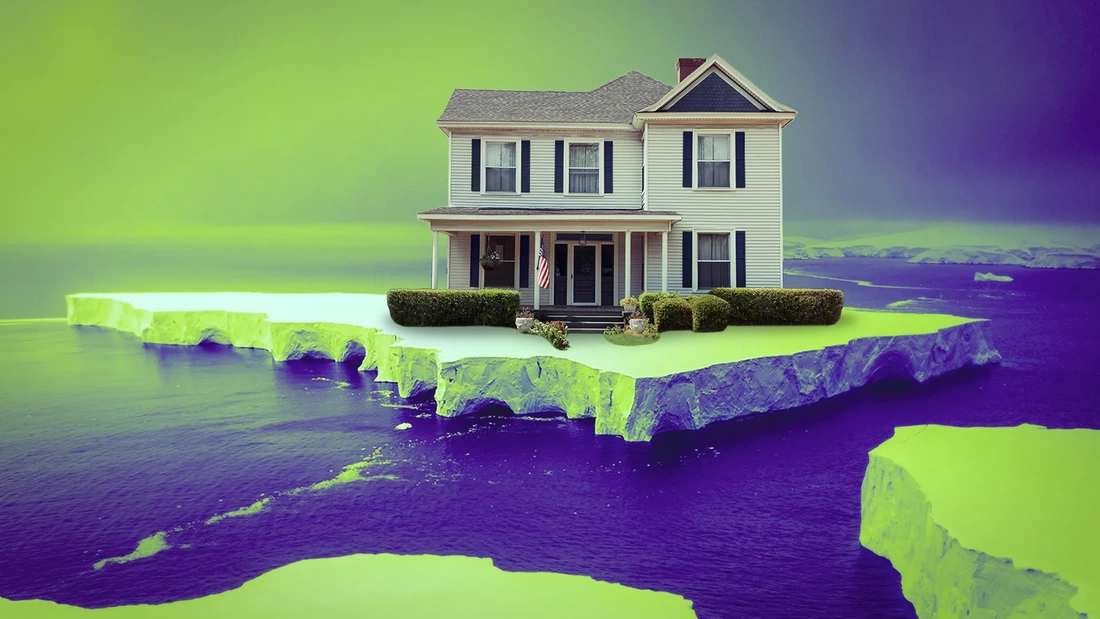
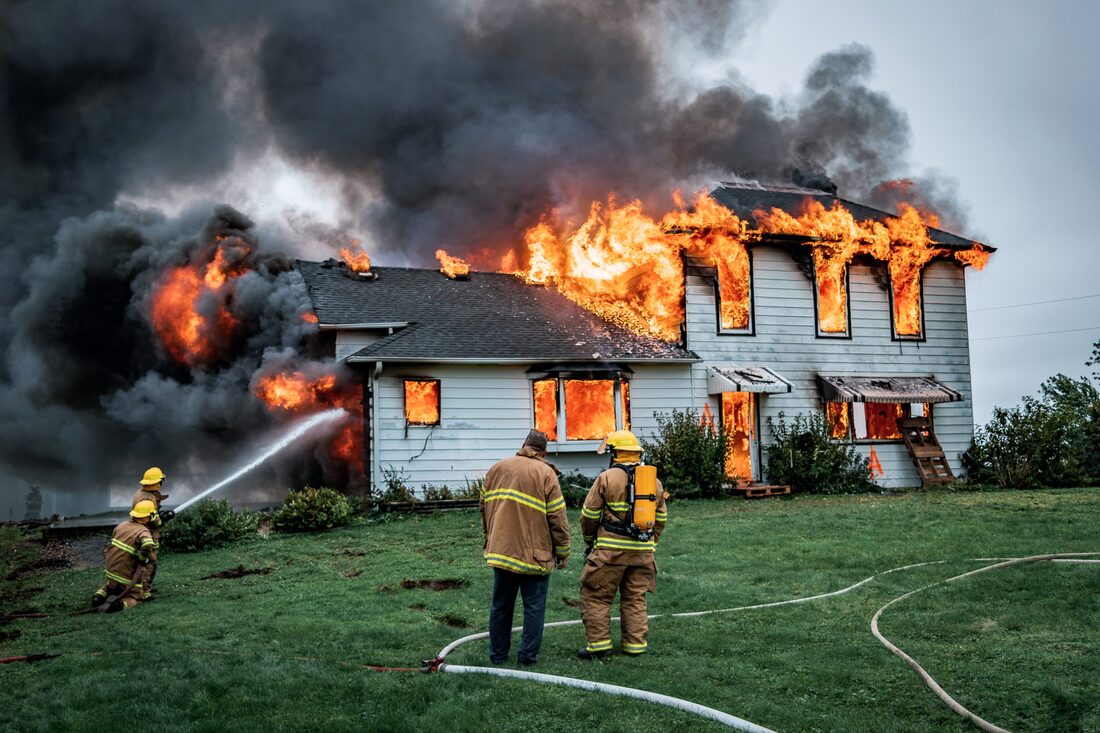

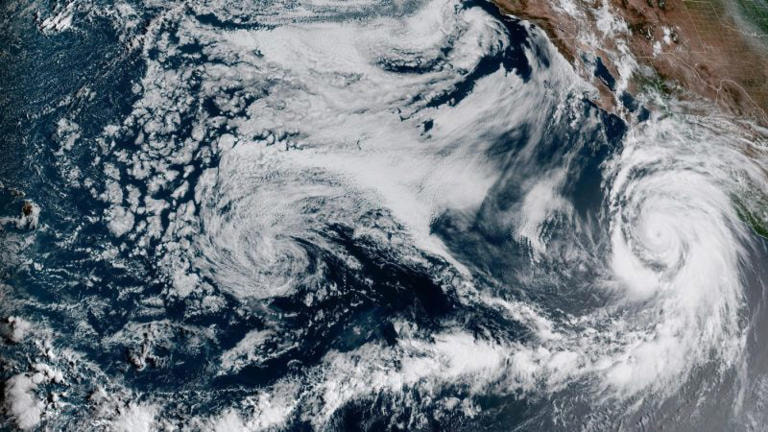

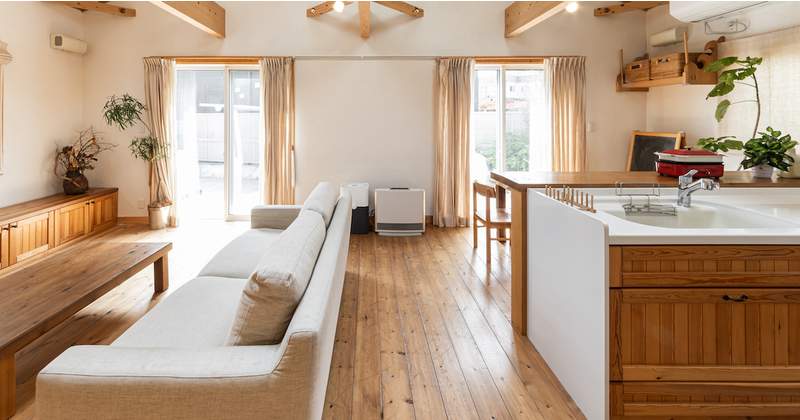
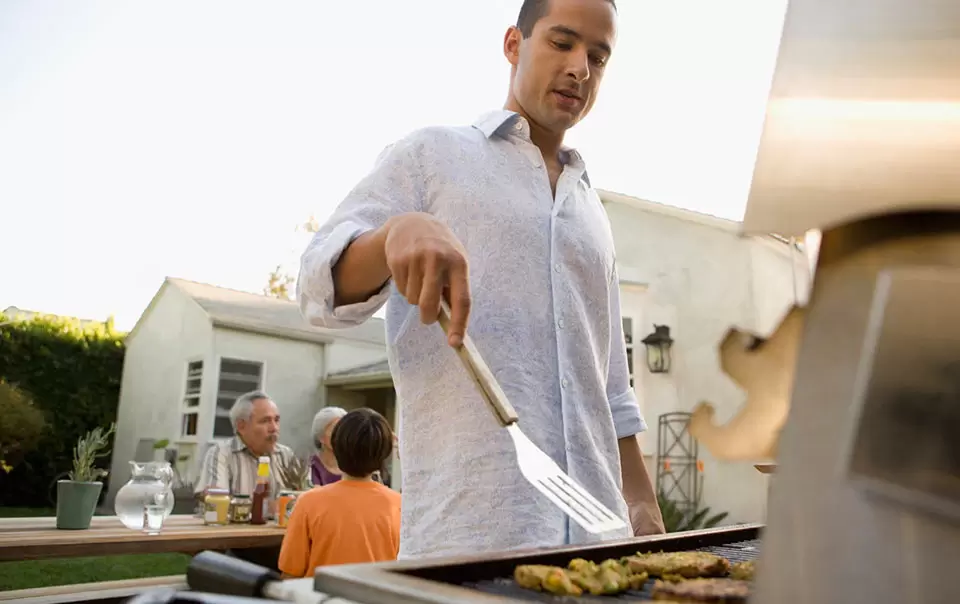
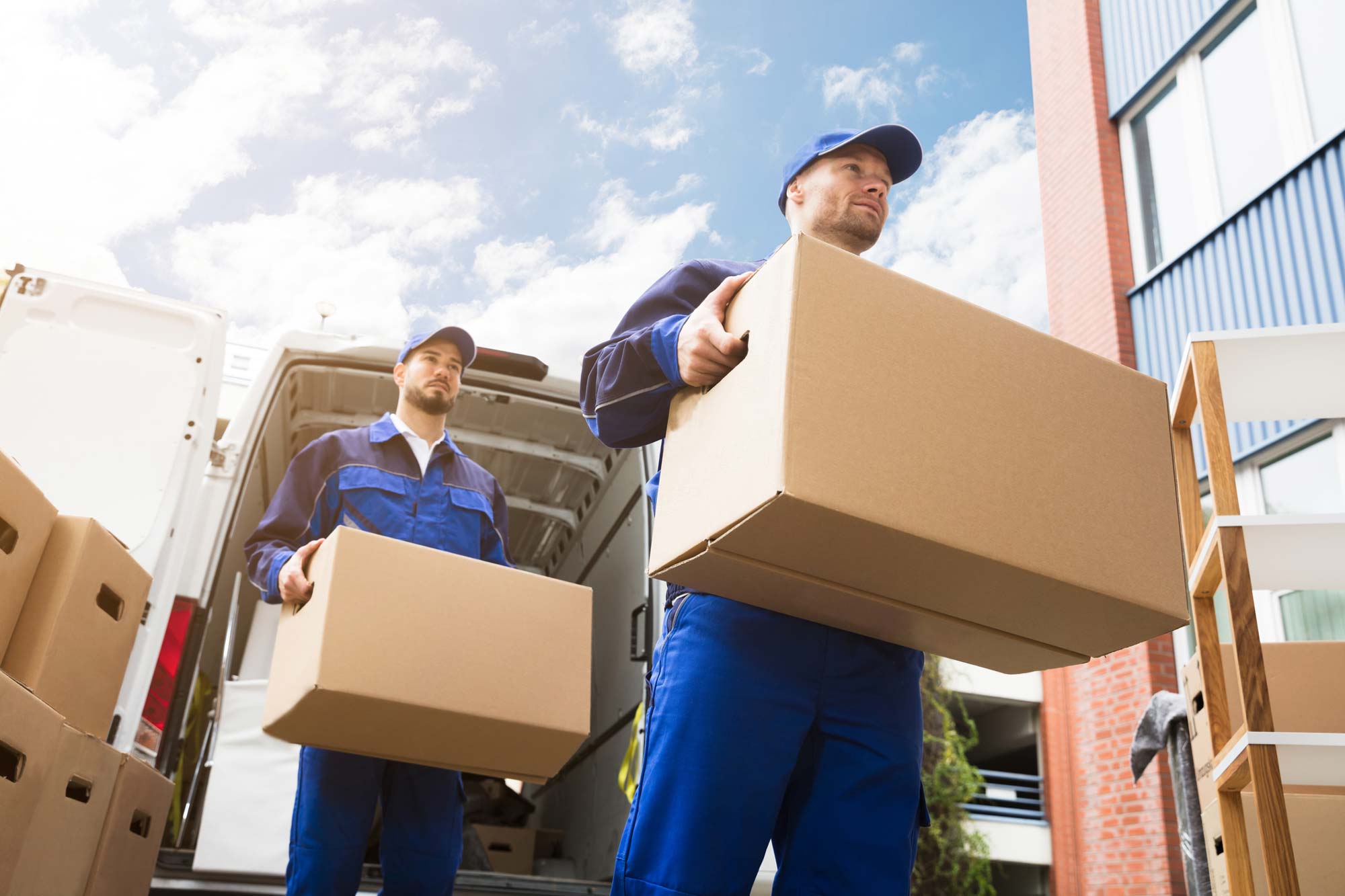
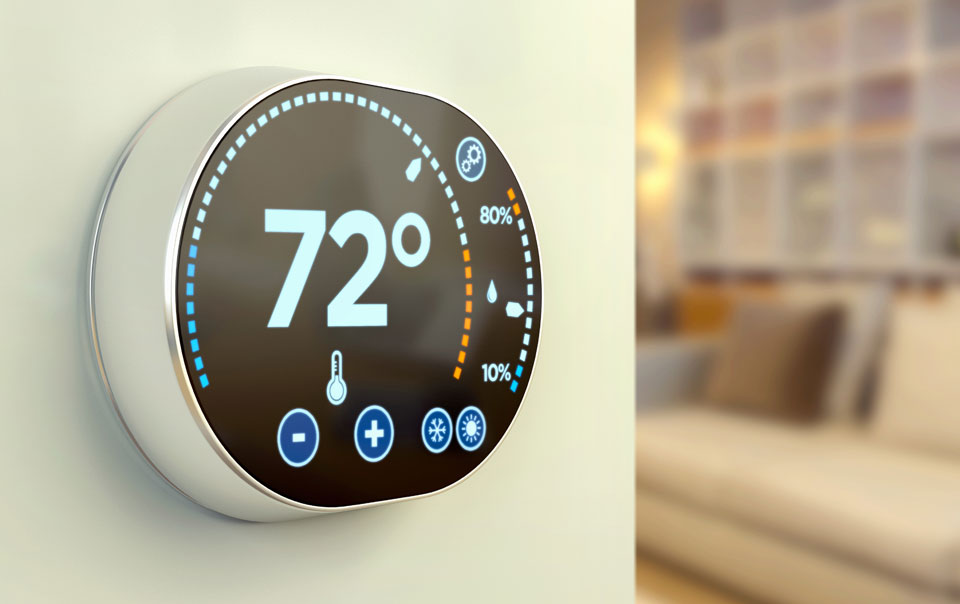
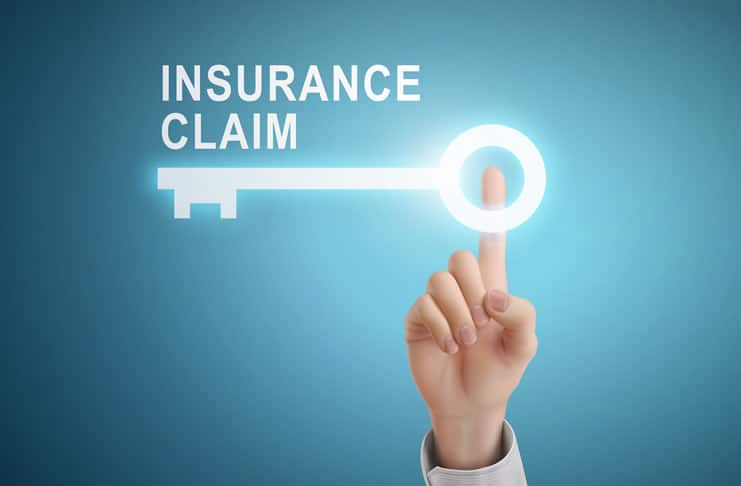

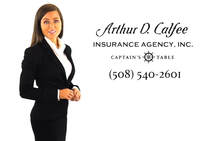



 RSS Feed
RSS Feed




